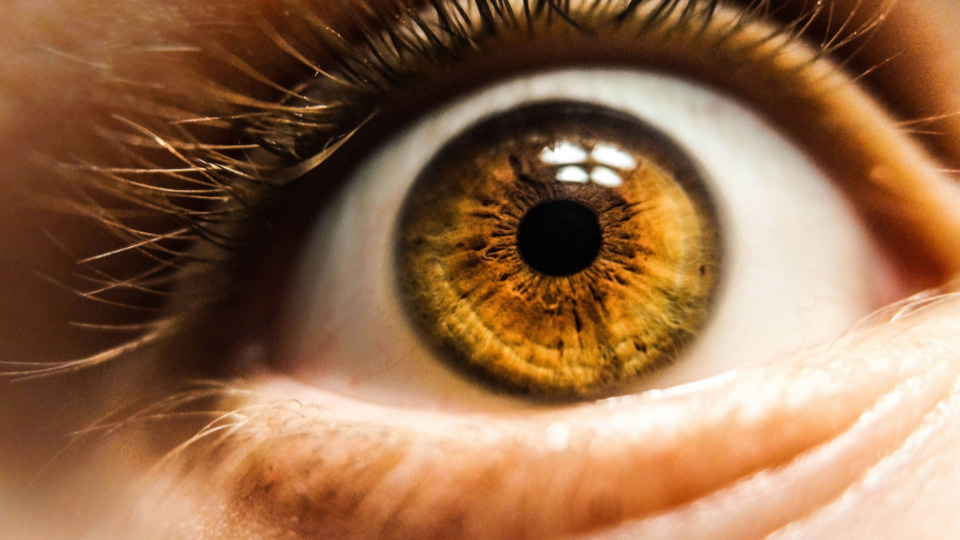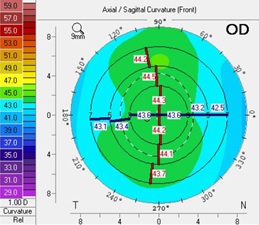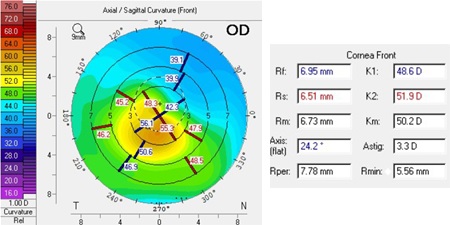Corneal Cross-Linking: Strengthening the Eye Against Keratoconus
31/10/2025

01/10/2024
The word topography comes from the Greek "topo" meaning place and "graphia" meaning to write or record. So topography is the art of graphically representing the exact physical configuration of a place or region on a map. From this definition we can replace "place or region" with "any surface" and in our case the surface we are going to analyse is the cornea.
In ophthalmology, corneal topography was preceded by another technique called keratometry, from which it is important to distinguish because the difference between them is not clear to everyone. Keratometry is a technique that also analyses the shape of the cornea and provides keratometric values that give us information about the curvature of the cornea. But the main difference with topography is that, in addition to the keratometric values, topography also gives us topographic colour maps to visually see the shape of the cornea (see image below).

Basically, there are 4 keratometric values that summarise the shape of a cornea: Flat keratometry (Kf), steep keratometry (Ks), flat axis and steep axis. Kf represents the curvature or power of the flattest or weakest meridian of the cornea, and Ks represents the same but for the steepest or strongest meridian. It is important to note that these keratometric values can be expressed either in diopters (D), which expresses power, or in millimetres (mm), which expresses the radius of curvature. The shorter the radius, the steeper the cornea and the higher the power. Usually, power in diopters is the standard way topographers express the shape of the cornea, and they usually add an extra value called mean keratometry (Km), which is simply the mean of Kf and Ks. The last two values are the flat axis and the steep axis, and they express the orientation of Kf and Km in degrees. These values can vary from 0° to 180° and the flat and steep axis will always have a difference of 90°. Although it is not possible to make a diagnosis with just one topography, a healthy cornea should have a Km of less than 47D and the difference between Kf and Ks (also called astigmatism) should not be more than 2.5D.
Finally, as explained earlier, topographers also produce colour-coded maps. The basic interpretation of these maps is very simple, the strongest or steepest areas of the cornea are represented by warm colours and the weakest or flattest areas are represented by cold colours.
Topography is the most important test for assessing the cornea, and it is crucial, for example, for detecting keratoconus, assessing corneal refractive surgery and calculating the intraocular lens in cataract surgery.
Having said that, based on the colour map and the keratometry values, could you guess whether the following topography is within the normal range or not?
